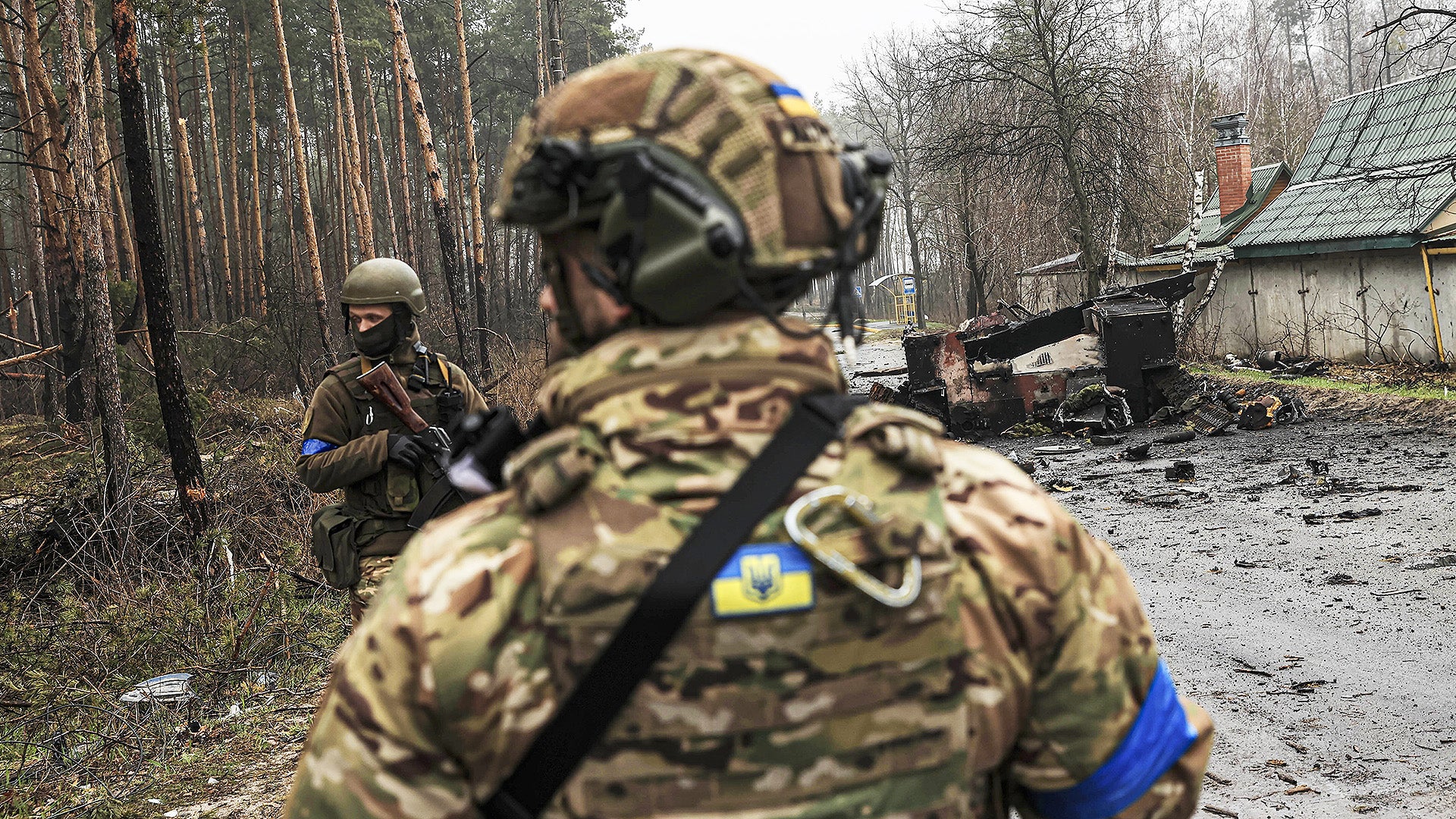Ukrainian troops have reportedly advanced north to the border with Belarus after a hasty withdrawal of Russian troops north of Kyiv, but in doing so have discovered the bloody, gruesome aftermath of Russian occupation.
While the Kyiv offensive is over, for now, Russia struck fuel storage tanks in Odesa with cruise missiles. Russia has been systematically destroying Ukraine’s fuel supply over the past couple of weeks. This comes as multiple indications and reports point to Russian forces reorganizing for a push to consolidate control of the Donbas.
Before we get to the latest, get caught up on The War Zone’s previous rolling coverage of the war in Ukraine by clicking here.
WARNING: This story contains graphic material below.
The Latest
The liberated towns of Bucha, Hostomel, and Irpin north of Kyiv are active crime scenes as Ukrainians find mounting evidence of atrocities at the hands of Russian occupying forces. A Ukrainian prosecutor told AFP on Sunday they had found 410 dead civilians in recaptured areas of the Kyiv region.
Two hundred and eighty people were reportedly dumped in a mass grave in Bucha, according to Mayor Anatoly Fedoruk in an interview with the Washington Post. Satellite imagery reportedly shows the grave’s location at a church.
The reports come a day after returning Ukrainian troops and observers had to literally weave through civilian bodies in Bucha’s streets in some of the most graphic footage since the war began. Many of the dead military-aged males shot with their hands bound. The remains drew comparisons to zachistka, an informal Russian military term associated with “mop-up” operations in the Second Chechen War.
There are further disturbing reports of torture, rape, and murder at the hands of Russian occupiers in Bucha and Irpin, all of which Russia denies amid widespread western condemnation. The ghastly human toll is bad enough on its own, but there are also risks from both unexploded ordnance (UXO) and Russian-laid mines or booby traps to cover their withdrawal.
Perhaps the most haunting realization, however, is this satellite imagery from the occupied city of Kherson in south Ukraine, where Russian forces have reportedly dug 800 new grave plots in the city’s cemetery. Given the events in Bucha and Irpin, there are concerns that a similar massacre is underway in the southern administrative center of nearly 300,000 people that Russian forces have held for nearly a month.
Explosions rocked the port of Odesa on the Black Sea early Sunday morning as cruise missiles hit several fuel storage tanks. It’s unknown precisely what type of missiles Russia used in the strike.
Russia has frequently targeted Ukrainian fuel supplies, the brilliant fire from the attack on Vasylkiv in the war’s first few days comes to mind. But Sunday’s strike could be seen as either a strategic attack to hamper Ukrainian fuel stocks ahead of planned offensives in southern Ukraine, or a convenient retaliation after Ukrainian Mi-24s raided a Russian fuel depot in Belgorod. You can read our coverage of that attack and its effects here. Russia has hit similar fuel stocks in central and western Ukraine in recent days in a bid to strangle the country’s energy supplies.
The looming threat of a Russian amphibious operation to take Odesa has reportedly prompted the U.K. to seek anti-ship missiles for Ukraine.
Ukrainian troops reached the Belarusian border as Russian troops withdrew. Troops took photos in front of the containment sarcophagus at the Chernobyl Nuclear Power Plant. The war’s first day saw intense fighting in and around the plant’s exclusion zone as Russian troops poured over the border on CCTV cameras.
The Ukrainian advances come as it appears Russian forces are indeed redeploying from the northern front. Satellite imagery appears to confirm this as the large number of Su-25SM2 Frogfoot close air support aircraft have left Luninets Air Base in Belarus.
If these jets have truly left Belarus, they may likely reappear supporting Russian troops in the Donbas.
Additionally, there are reports from U.S. intelligence that Russian President Vladimir Putin may soon name an individual commander for the Russian war in Ukraine, a departure from the varied commands overseeing operations through the war’s six weeks.
Such a change could prove effective in bringing operations under singular control rather than multiple headquarters, and the move would likely provide for more direct top-down control from Moscow. CNN’s report noted Putin is likely eager to find some form of victory he can claim for the annual May 9 Victory Day celebrations in Russia marking the Second World War’s end.
Russia reached another milestone for its losses in Ukraine on Sunday, with forensic open-source investigators confirming more than 400 tanks lost so far.
On that note of losses, Ukrainian air defenses claimed a kill on a single-seat Su-35 fighter near Izyum. Videos showed the plane tumbling to the ground in a ball of fire before troops later reached the charred wreckage. It’s unclear what SAM system brought down the aircraft.
Ukrainian forces reportedly captured the plane’s pilot. This is the first confirmed kill of a Su-35 since the war began. While principally a fighter, photos from earlier this month showed Su-35s in Belarus loaded with Kh-31P anti-radiation missiles in the suppression of enemy air defenses (SEAD) role, perhaps putting the jet into harm’s way in targeting Ukrainian SAMs deep in the country. We wrote about how Russian air operations over Ukraine could change as the war progresses, and you can read about that here.
We will continue to update this post with new information until we state otherwise.
Contact the author: stetson.payne@thewarzone.com
